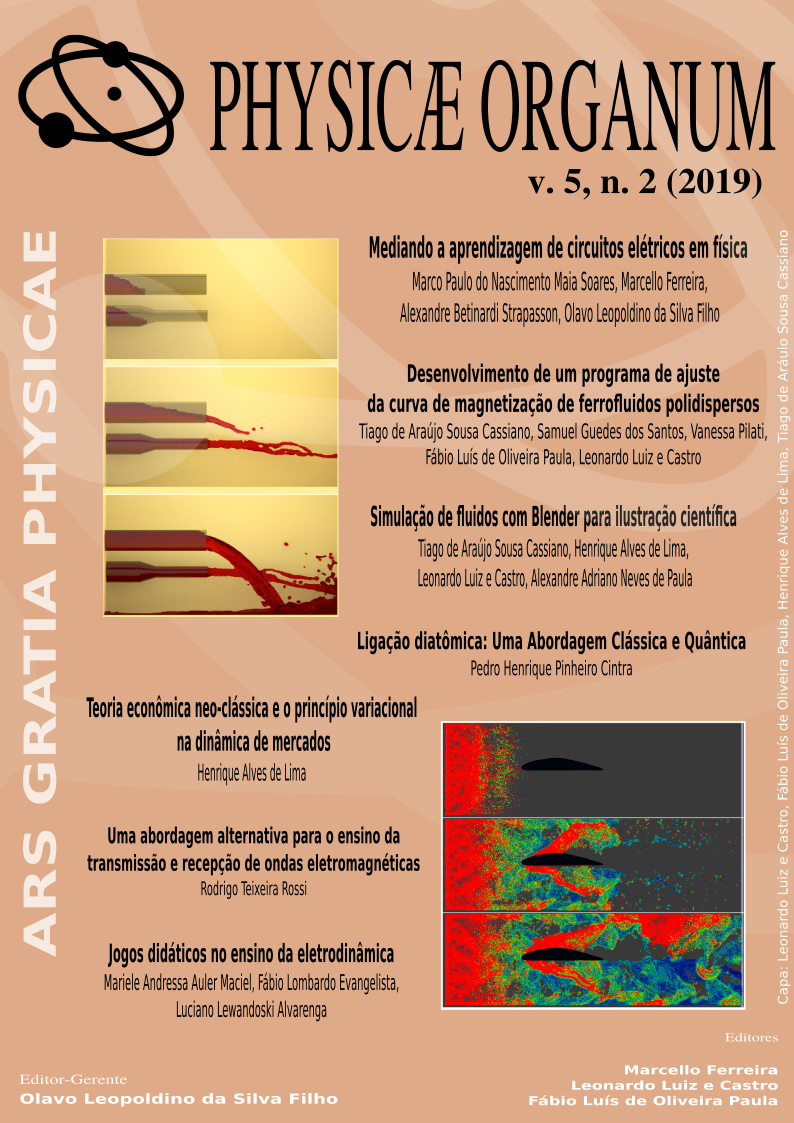Diatomic bonding
A classical and quantum approches
Abstract
The present article has the intention of showing the difference between classical and quantum analysis for a diatomic molecule, on the aspects of vibrational transitions, showing the results and predictions of each method, describing the solutions and comparing them with the real behavior. Making clear the limitations and validities of each method.
References
ATKINS, P. Physical Chemistry, 1031p. [S.l.]: WH Freeman and Co., New York, 1994. 43
BARBOZA, F. et al. Analytical solution of the morse potential in classical mechanics. Revista Brasileira de Ensino de Física, SciELO Brasil, v. 29, n. 4, p. 543”“547, 2007. 50
CHEN, G. The exact solutions of the schrödinger equation with the morse potential via laplace transforms. Physics Letters A, Elsevier, v. 326, n. 1, p. 55”“57, 2004. 56
DONG, S.-H.; LEMUS, R.; FRANK, A. Ladder operators for the morse potential. International journal of quantum chemistry, Wiley Online Library, v. 86, n. 5, p. 433”“439, 2002. 58
EISBERG, R.; RESNICK, R. Quantum physics of atoms, molecules, solids, nuclei, and particles. Quantum Physics of Atoms, Molecules, Solids, Nuclei, and Particles, 2nd Edition, by Robert Eisberg, Robert Resnick, pp. 864. ISBN 0-471-87373-X. Wiley-VCH, January 1985., p. 864, 1985. 43
GOLDSTEIN, H.; POOLE, C.; SAFKO, J. Classical mechanics. [S.l.]: AAPT, 2002. 58
PAULING, L. The nature of the chemical bond and the structure of molecules and crystals: an introduction to modern structural chemistry. [S.l.]: Cornell university press, 1960. v. 18. 43
ROY, R. J. L. Determining equilibrium structures and potential energy functions for diatomic molecules. [S.l.]: Taylor & Francis: London, 2011. 159”“203 p. 44
SLATER, J. C. Quantum theory of molecules and solids. McGraw-Hill, 1963. 46
TASELI, H. Exact solutions for vibrational levels of the morse potential. Journal of Physics A: Mathematical and General, IOP Publishing, v. 31, n. 2, p. 779, 1998. 60
WOOLLEY, R.; SUTCLIFFE, B. Molecular structure and the born””oppenheimer approximation. Chemical Physics Letters, Elsevier, v. 45, n. 2, p. 393”“398, 1977. 52
Downloads
Published
Issue
Section
License
Autores que publicam nesta revista concordam com os seguintes termos:
Autores mantém os direitos autorais e concedem à revista o direito de primeira publicação, sendo o trabalho simultaneamente licenciado sob a Creative Commons Attribution License o que permite o compartilhamento do trabalho com reconhecimento da autoria do trabalho e publicação inicial nesta revista.
Autores têm autorização para assumir contratos adicionais separadamente, para distribuição não-exclusiva da versão do trabalho publicada nesta revista (ex.: publicar em repositório institucional ou como capítulo de livro), com reconhecimento de autoria e publicação inicial nesta revista.
Autores têm permissão e são estimulados a publicar e distribuir seu trabalho online (ex.: em repositórios institucionais ou na sua página pessoal) a qualquer ponto antes ou durante o processo editorial, já que isso pode gerar alterações produtivas, bem como aumentar o impacto e a citação do trabalho publicado (Veja O Efeito do Acesso Livre).




